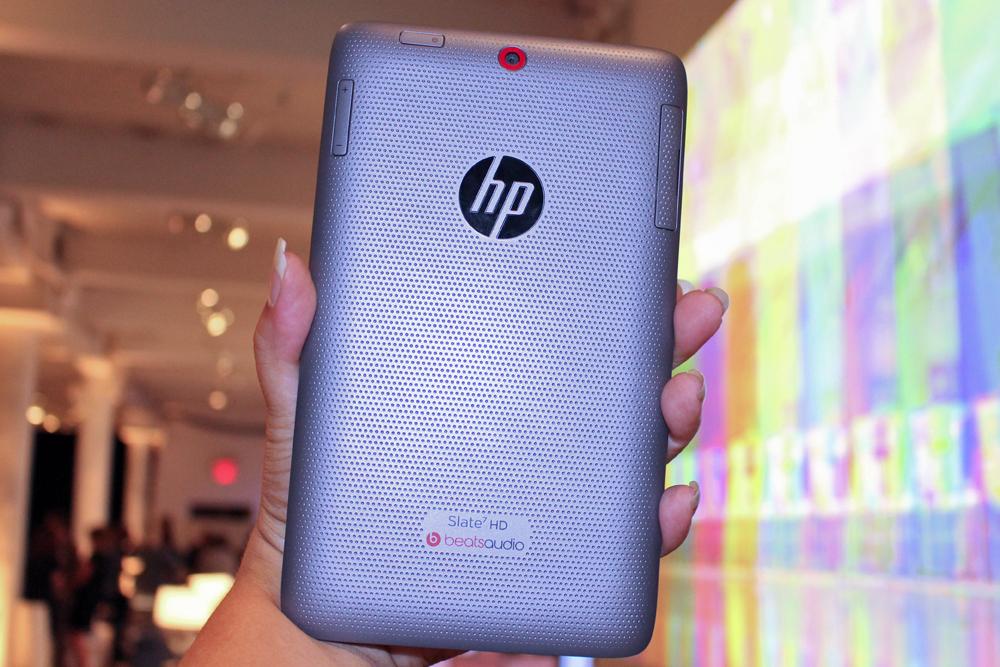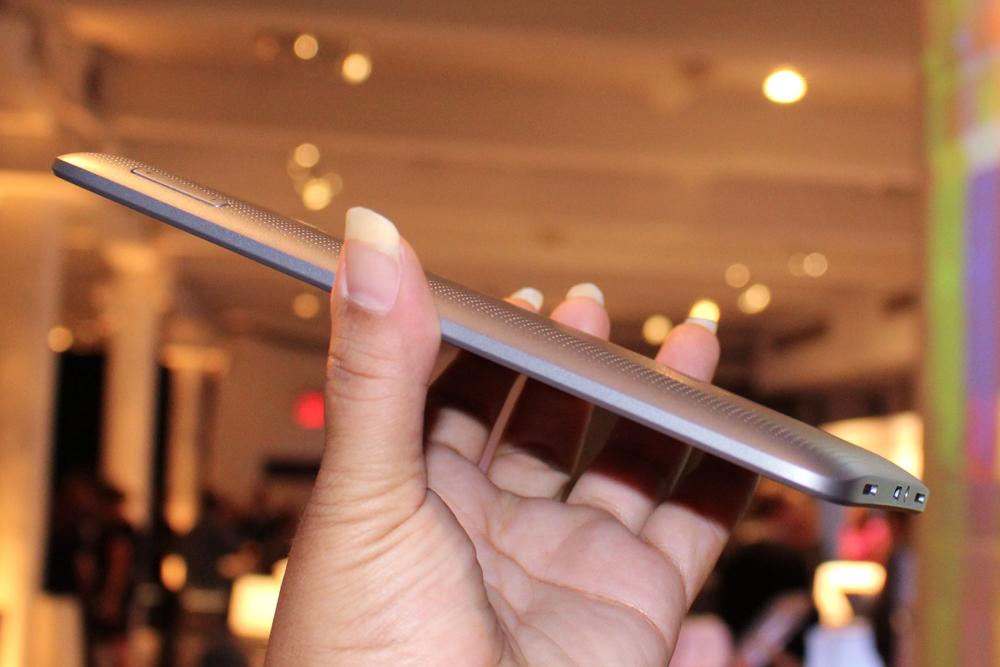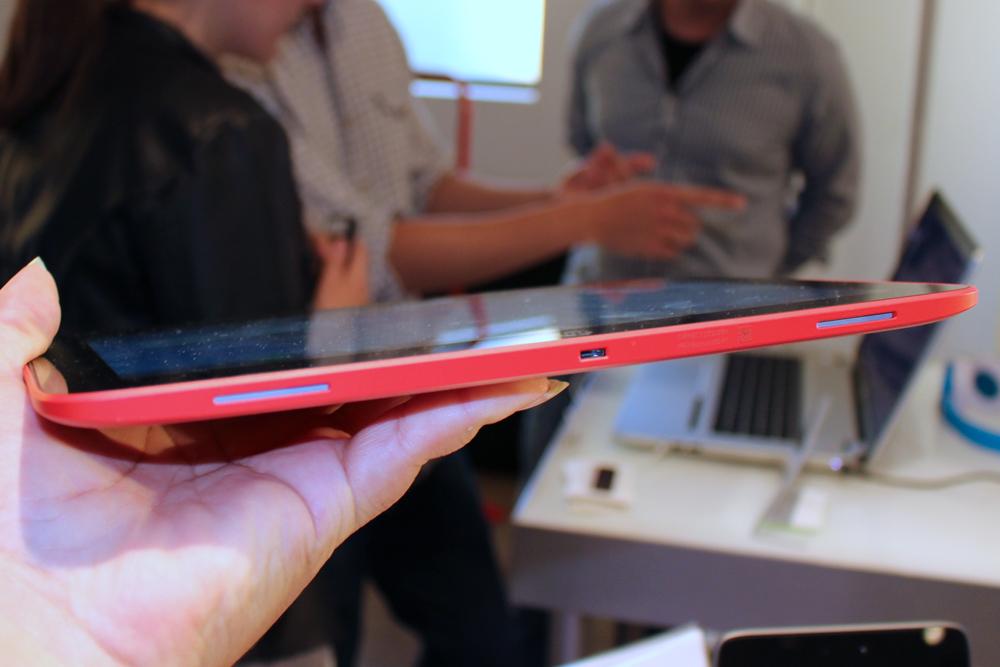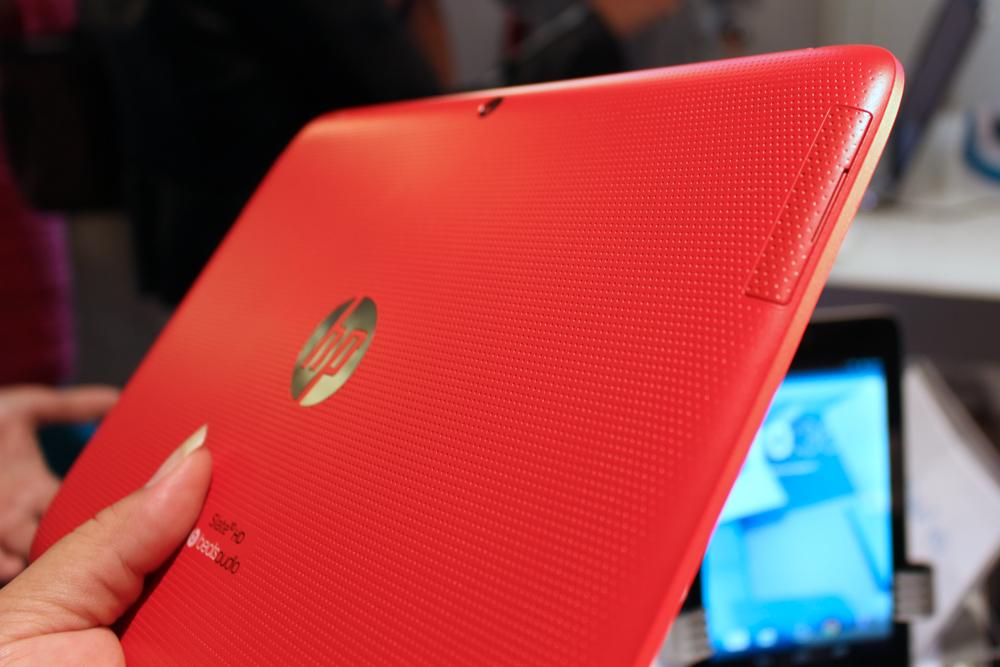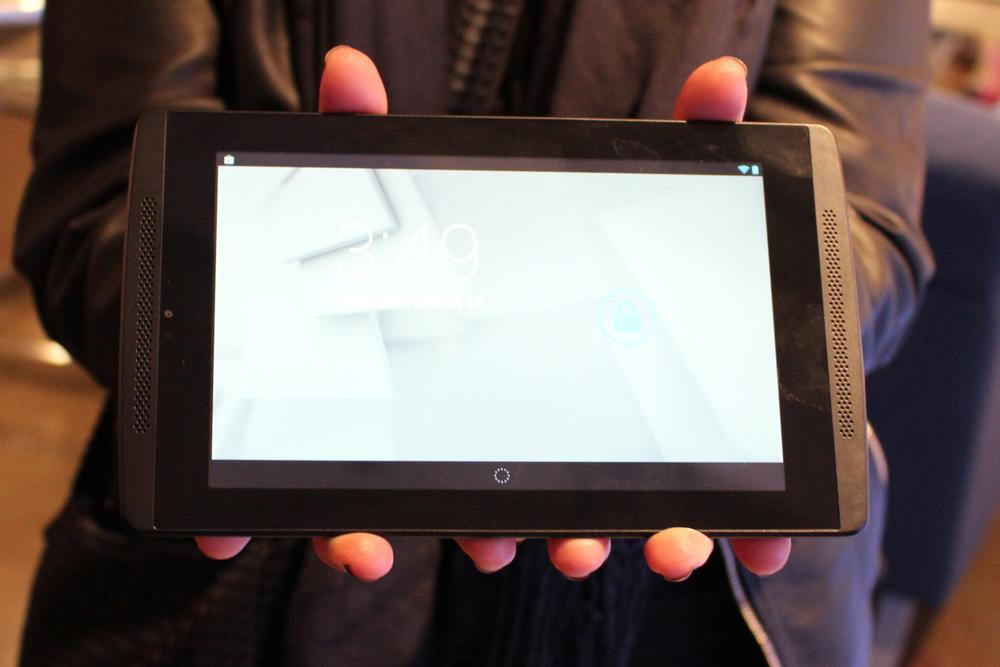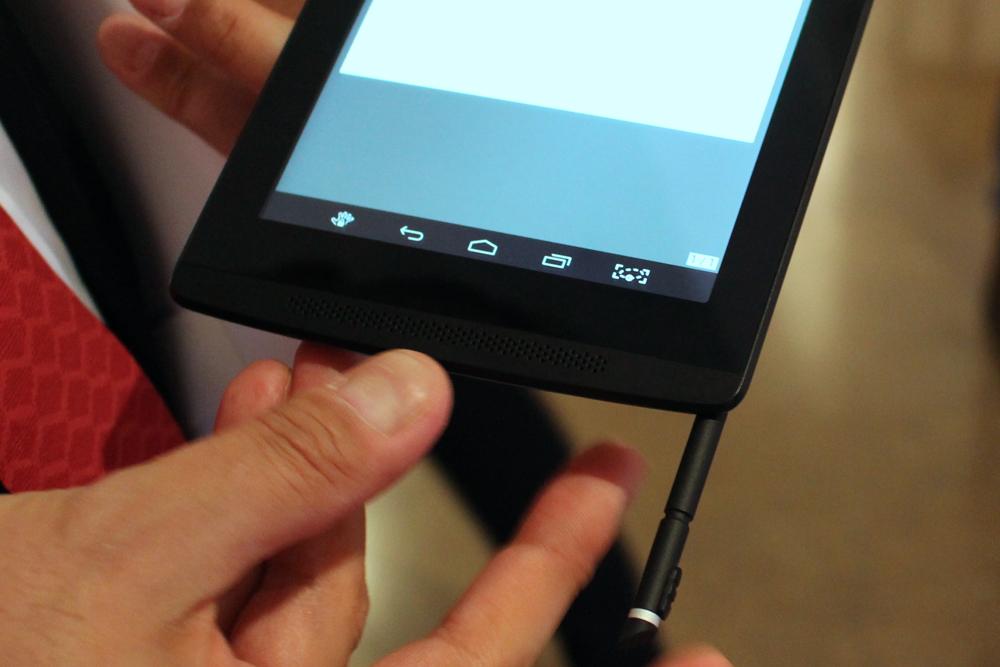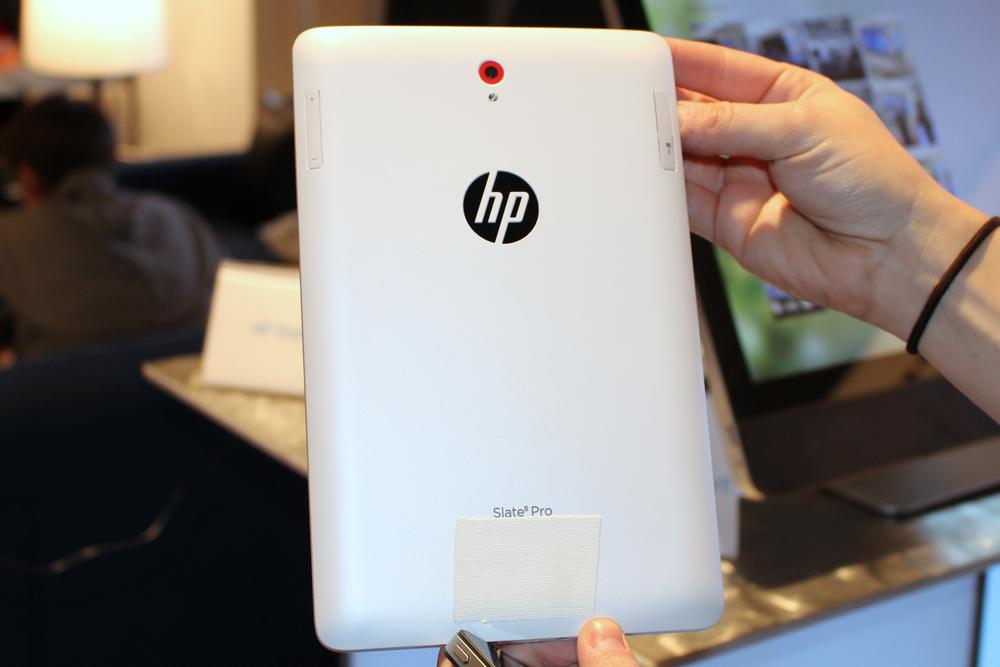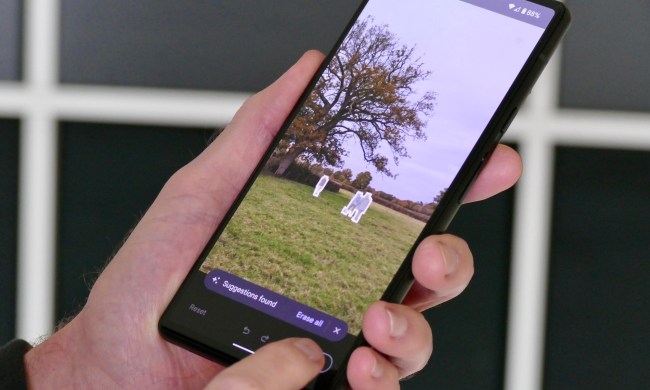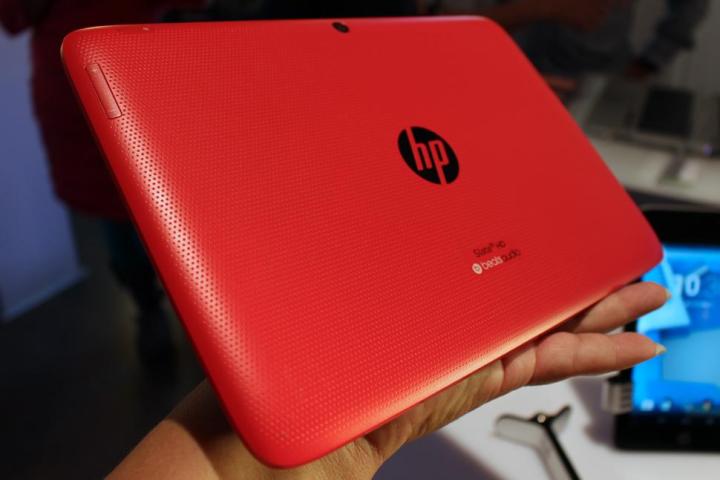
HP is probably one of the last major electronics manufacturers to get into the Android game. We worried about the company’s commitment to Sparkle Motion when the HP Slate 7 came out. Underpowered, sub-par display, bad battery life, the list goes on. But then there was glimmer of hope: the SlateBook x2 looked pretty sweet. Could that be a harbinger of good things to come? Looks like the answer might be yes. HP has unveiled four new Android tablets, all named HP Slate-something, that are doing their best to make us forget about that other thing.

First up is the HP Slate7 HD. Adding HD to a product name is an easy way to make it seem better (just ask Amazon), but that HD has to signify something. In this case, a higher resolution display: 1280 x 800 pixels. Not the highest or even high end, but respectable for a 7-inch tablet.
Slate 7 HD and Slate 10 HD
The Slate 7 HD can boast several improvements. The screen itself is much better quality with wide viewing angles and bright colors. The overall design is much sleeker and more comfortable to hold. The texture on the back is a nice touch, as are design touches like the red ring around the 5-megapixel camera on back.
Inside, a dual-core processor runs the show, and so far it looks much faster than the chip from the original Slate. Android 4.2 Jelly Bean is smooth and framerates look speedy. HP continues to just go with stock, no skin, and so far we’re not complaining.
Aside from the Micro USB port there’s a MicroSD card slot and a SIM card slot. This won’t be standard on all models. The mobile broadband models will offer an extra incentive for what will surely be the extra cost: free T-Mobile 4G data for two years. It’s only 200MB per month, but that’s still pretty generous and probably enough for those few times you need to download something and can’t find Wi-Fi.

The big brother to the Slate 7 HD tablet is the Slate 10 HD. There’s not much difference between the two of them except screen size. They even have the same resolution, which is more of a problem with this size screen. They have the same chip inside, same ports, and same T-Mobile deal for broadband versions.
We’re fans of the striking color, and again the back has a nice texture. The tablet is light for a 10-incher and comfortable to hold.
HP isn’t releasing prices on these or any of the other tablets yet and will only say they’ll be out in November. We’re hoping the 7 HD will be $200 or less and the 10 HD will come in around $350 or less.
HP Slate 7 Extreme
HP stepped up in the realm of entry-level tablets, but the company isn’t content to just compete with the Nexus 7. It wants to go Extreme. Thus, the HP Slate 7 Extreme. This 7-incher would probably beat up the original Slate 7 before using its carcass to carve scratchitti into its own glass. That’s extreme, right?

The 7 Extreme is based on the Nvidia Tegra Note reference platform-something a chip maker provides for consumer hardware companies to build on-so it has an Nvidia Tegra 4 chip inside, 1GB of RAM, 16GB of internal storage, and a 1280 x 800 pixel display. That’s not an extreme resolution, for sure. It’s fine for a 7-inch tablet.
Since this is based directly on a design from Nvidia, the Slate is bound to be a great platform for Android games. HP plans to highlight this aspect by offering Bluetooth game controllers and encouraging people to hook it up to their HDTVs via the micro HDMI port. This setup may satisfy the casual gamer and young kids, though we worry that HP’s strategy of selling this tablet as a console alternative might not work out for them. On it’s own the Slate looks like a capable multimedia machine thanks to the front-facing speakers and the bright, quality display.

We mentioned the reference design is called the Tegra Note, and that’s because it has an integrated stylus. What’s different about this pen is that it uses capacitive stylus technology (the kind that mimics your fingertip) with a fine-tip, yet still offers pressure sensitivity and palm rejection like a digitized stylus. This way HP can keep costs down yet still offer a good pen experience. During our hands-on the palm rejection worked, the pressure sensitivity was only so-so. The demo units aren’t production ready yet, so we’ll hold off judgment until we see the final.
Like the others, the Extreme runs Android 4.2 with no skin. It will come with two pen-enhanced apps for drawing and taking notes. More will come after launch.
Even with the integrated pen, the Slate 7 Extreme is more of an entertainment and artistic device than a business one.
HP Slate 8 Pro
For business, you’ll need to check out the last of HP’s new tablets, the Slate 8 Pro.

The Slate 8 Pro is HP’s iPad Mini challenger. So much so that the tablet not only has a 7.9-inch display, it also has a 4:3 aspect ratio, just like the iPad. HP’s baby has a 1600 x 1200 pixel resolution; higher than the iPad. The result is a wider than average Android tablet that’s okay to hold in one hand but will be a stretch for those with small hands. It’s not unwieldy, though. The Slate 8 is light for the size and feels comfortable in the hand. The screen is pixel dense with wide viewing angles and popping colors. And the 8-megapixel camera on the back isn’t terrible!
HP will market this as a BYOD work device and thus pre-loads some business-friendly apps to start. This Slate also runs on Tegra 4 and has an HDMI out port for presentations as well as games and video.
As with the other tablets, we don’t know the price yet. Expect the Slate 8 Pro to have premium pricing. It has the word Pro in it, after all. The Slate 7 Extreme will probably come in closer to $200. All will come to stores in November.
HP finally gets it?
From our short hands-on time with each of these devices, it looks like HP finally understands what makes a decent Android tablet. All the important elements from design and display quality to performance and software seem to be in line with our favorite tablets already on the market. We won’t know for sure until we do a full review. Still, there is cause to hope that HP is finally getting this tablet thing right.
